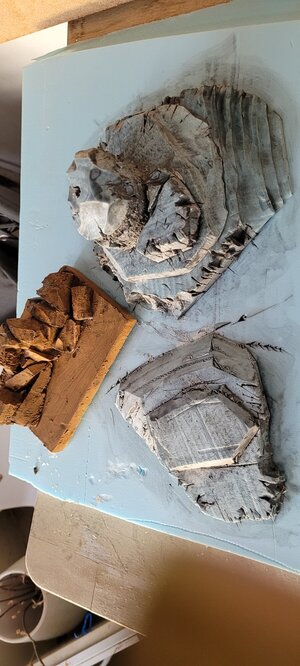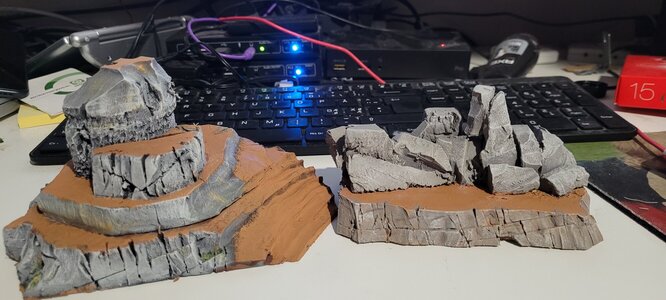dgrafix
Well-Known Member
I am at a point of sealing my foams on a section of my layout.. and am thinking on prepping & sealing it.
I know modpodge is probably the winner but A)it's 2-3x the price and B) I can only order it online, which is even more expensive with postage and generally a pain in the bum..because C) I want/need it N W!
W!
So I was wondering if I could use a "water, PVA and acrylic mix"? Is there a massive difference?
Does anyone have any good recipes for this, like how much of each and what colour etc.
The foam is a mixture of XPS 300 with a blueish cyan colour and in some parts I'm using that expanding insulation goop, which is yellowish, and have filled the spongey holes with a rough grade filler after carving it.. the XPS though carved/fractured really nicely so now I just want to seal it.
Edit.. actually maybe this belongs under scenery rather than construction.. sorry if that the case and maybe a mod can move it if it belongs more there
I know modpodge is probably the winner but A)it's 2-3x the price and B) I can only order it online, which is even more expensive with postage and generally a pain in the bum..because C) I want/need it N
So I was wondering if I could use a "water, PVA and acrylic mix"? Is there a massive difference?
Does anyone have any good recipes for this, like how much of each and what colour etc.
The foam is a mixture of XPS 300 with a blueish cyan colour and in some parts I'm using that expanding insulation goop, which is yellowish, and have filled the spongey holes with a rough grade filler after carving it.. the XPS though carved/fractured really nicely so now I just want to seal it.
Edit.. actually maybe this belongs under scenery rather than construction.. sorry if that the case and maybe a mod can move it if it belongs more there
Last edited:



